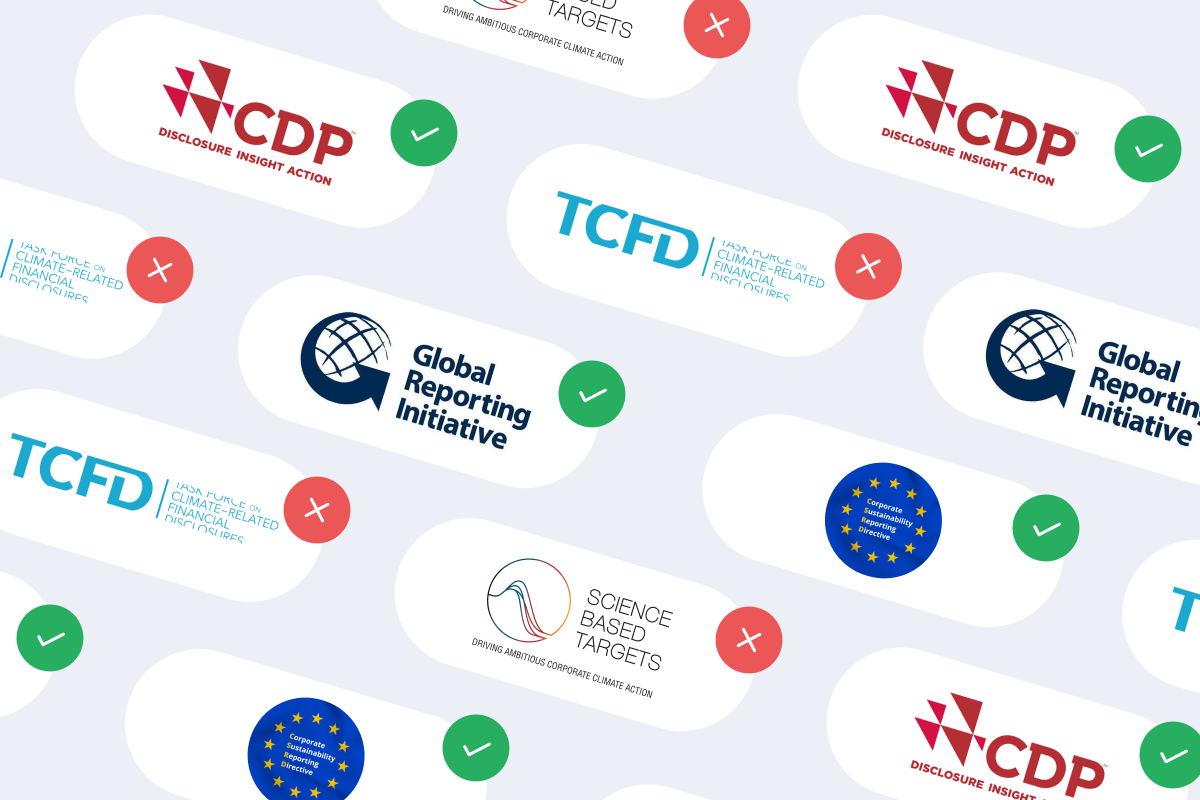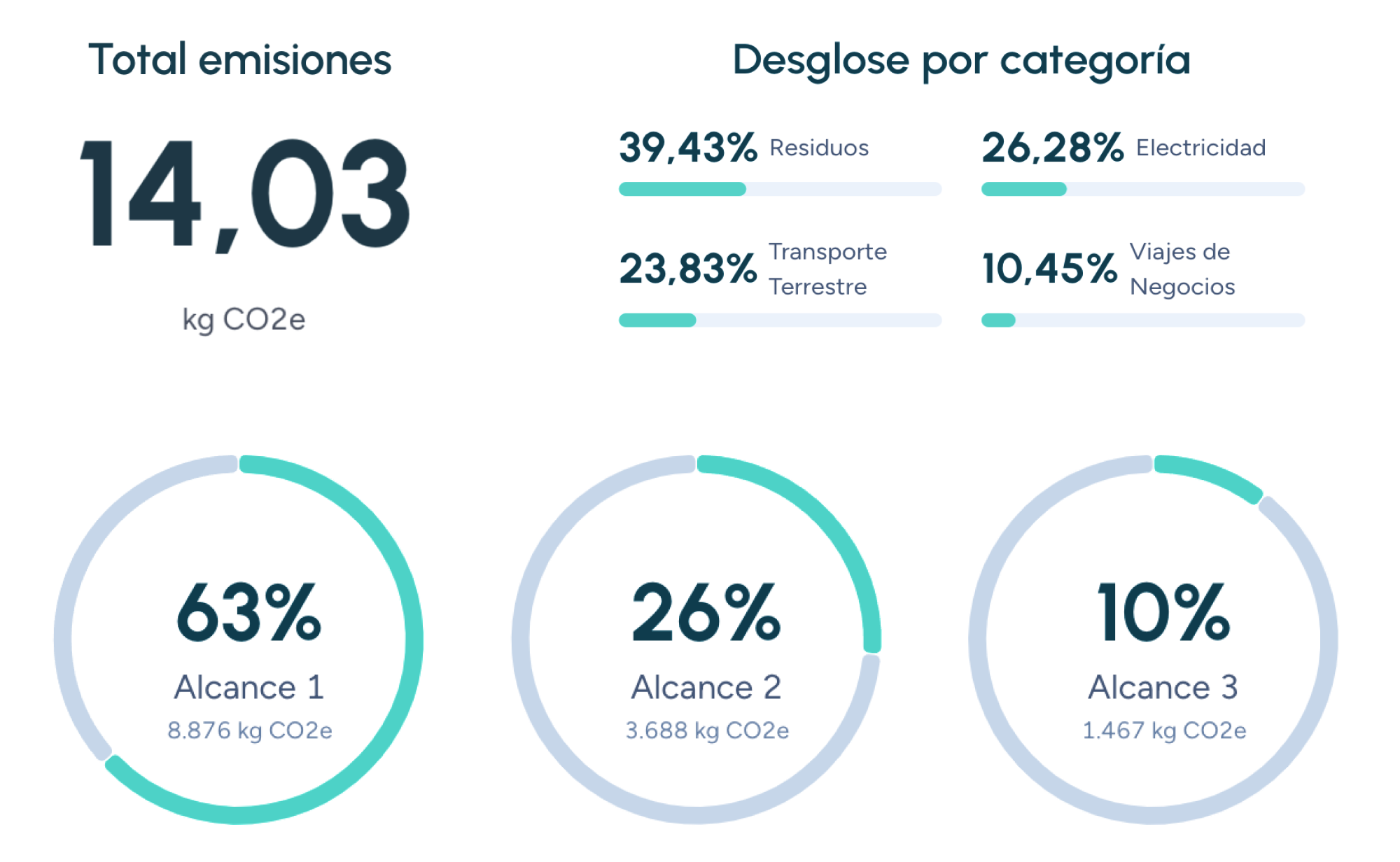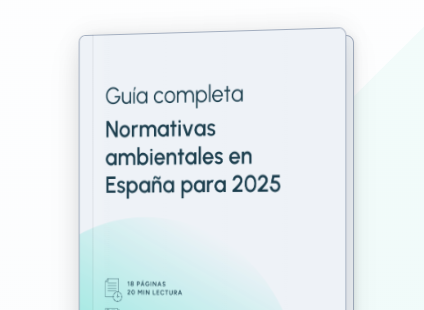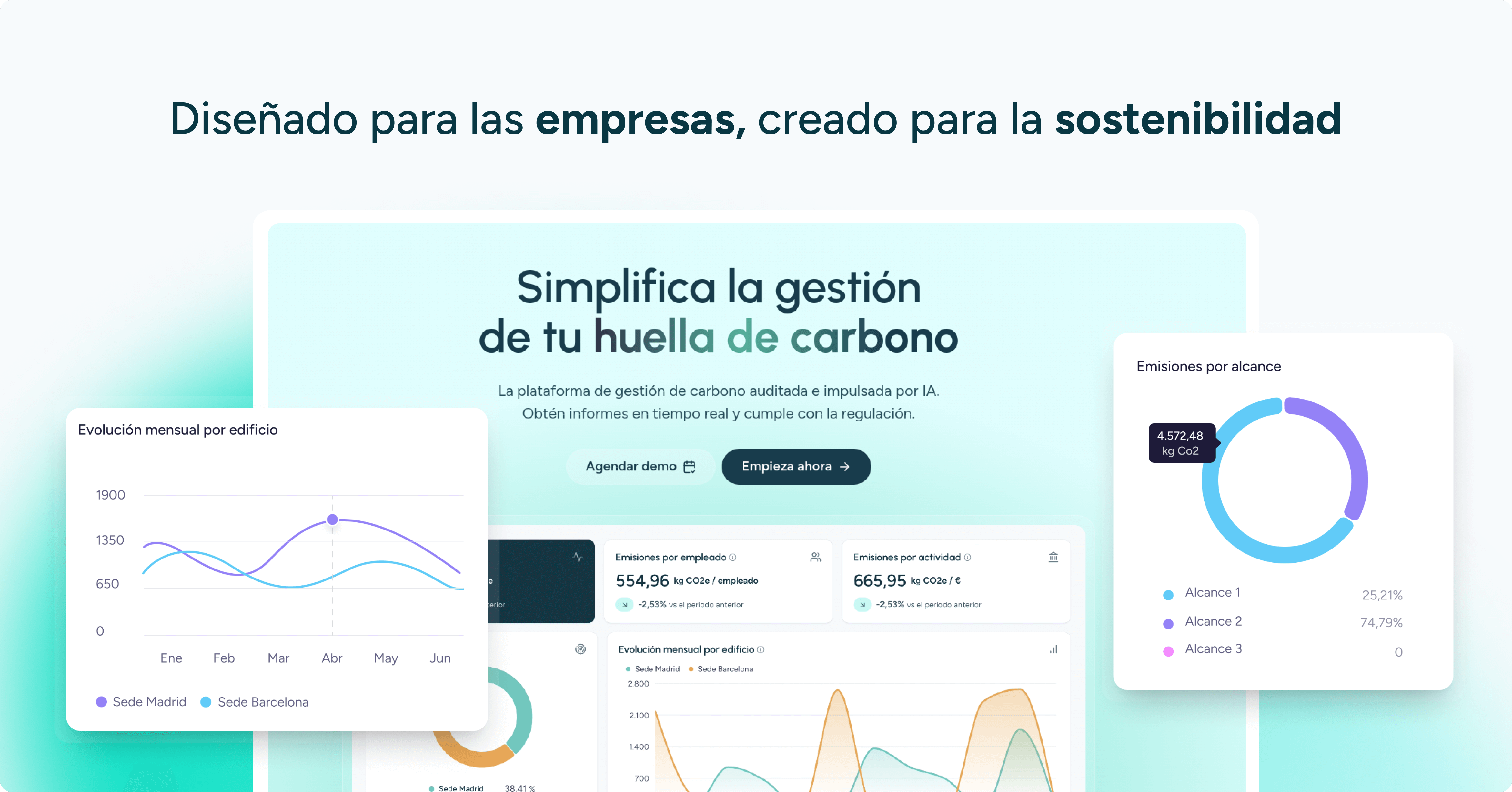Back to the blog
8 Best Software Tools for Service Carbon Footprint Management
Jaume Fontal
CPTO & Co-Founder
Measuring the service carbon footprint has become a priority for companies seeking to comply with European sustainability regulations and progress towards real decarbonisation of their operations.
While the environmental impact of physical products has been assessed for years through Product Carbon Footprints (PCF), services—whether digital, financial, logistics-related or technical—also generate significant emissions that must be quantified and reported with the same level of rigour.
Regulations such as the CSRD Directive, the EU Taxonomy Regulation and the GHG Protocol Product and Service Standard require organisations to measure and disclose the greenhouse gas (GHG) emissions associated with their services. The goal is not only regulatory compliance but also ensuring traceability, transparency and comparability of reported data.
The real challenge is not just collecting data but turning it into reliable, verifiable and decision-ready information. For this, specialised software becomes essential.
In this article, we analyse the best software tools for measuring the service carbon footprint—with Manglai as the leading option—and outline the criteria to consider when choosing the right tool for your organisation.
What is the Service Carbon Footprint and why is it Important?
The Service Carbon Footprint (SCF) quantifies the greenhouse gas emissions generated throughout the lifecycle of a service. This includes all stages—from service delivery and resource use to the digital infrastructure required, staff transportation, customer service or even indirect travel associated with the service.
The result is expressed in tonnes of CO₂ equivalent (tCO₂e), enabling companies to identify their main emission hotspots and design more effective reduction strategies.
Measuring the service carbon footprint is crucial for several reasons:
- Transparency and credibility: it provides a clear view of the environmental impact of intangible activities and strengthens corporate reputation.
- Operational efficiency: it helps identify carbon-intensive processes and optimise resource use.
- Access to green financing: banks and investment funds increasingly require verifiable environmental metrics.
- Greenwashing prevention: using validated data mitigates reputational risks.
If you want to understand how this calculation connects with broader methodologies, you can read our article on Life Cycle Assessment (LCA): How to evaluate a product’s environmental impact.
What is the Difference Between a Product Carbon Footprint and a Service Carbon Footprint?
Although both concepts aim to quantify climate impact, the Product Carbon Footprint (PCF) and the Service Carbon Footprint (SCF) differ significantly.
The Product Carbon Footprint analyses emissions linked to a physical good throughout its lifecycle: raw materials, manufacturing, transport, use phase and end of life.
In contrast, the Service Carbon Footprint focuses on intangible processes, such as the electricity consumed by cloud infrastructure, travel associated with technical support, or the energy used in data centres.
While PCF calculations rely heavily on material and production data, SCF requires more flexible approaches that combine energy, digital and logistics information. This is why specialised software tools are critical to ensuring methodological consistency and traceability.
The service carbon footprint is especially relevant for sectors that may not manufacture physical goods but still generate high indirect impacts, such as consulting firms, technology companies, banks, insurers or cloud providers.
What are the Key Criteria for Choosing the Best Software to Calculate and Manage the Service Carbon Footprint?
Choosing the right tool can be the difference between a superficial calculation and an audit-ready report aligned with international standards.
Below are the six essential criteria that any reliable, regulation-compliant software should meet:
- Recognised methodology: The software must be based on internationally accepted frameworks such as the GHG Protocol Product and Service Standard, ISO 14064-1, ISO 14067, the CSRD requirements and the European Sustainability Reporting Standards (ESRS E1). This ensures the comparability and validity of results during external verification.
- Data coverage and quality: A robust tool must include verified, up-to-date datasets such as DEFRA, Ecoinvent or IPCC and adapt to different sectors and geographies. High-quality data is essential to avoid emission factor errors or calculation inconsistencies.
- Automation and integration: The ideal tool should integrate seamlessly with existing systems (ERP, CRM, cloud platforms or internal databases) to automate data collection, minimise manual errors and speed up consolidation across departments.
- Usability and user experience: An intuitive interface and clear visualisations are essential so non-technical teams can understand and communicate results through interactive dashboards and custom reports. This facilitates alignment between operational teams and management.
- Scalability and flexibility: The tool should allow companies to start with a pilot service and scale up to the entire service portfolio or business units—particularly important for organisations with decentralised structures or international presence.
- Total cost of ownership (TCO): Beyond licensing fees, companies must consider implementation time, learning curve and technical support. A powerful but difficult-to-use system may be less efficient than a streamlined platform tailored to the team’s needs.
Which is the Best Software to Calculate and Measure the Service Carbon Footprint?
Choosing the best software for calculating and managing the Service Carbon Footprint is no simple task, as the reliability of the results depends on both data quality and the methodology used by the tool.
In a context where digital, logistics or financial services must report emissions with the same rigour applied to physical products, having specialised software makes the difference between an approximate estimate and a verifiable report.
The key lies in finding the right balance between methodological precision, ease of use and integration capacity.
Below, we analyse the top tools available and explain why Manglai leads the category, combining rigour, agility and full alignment with European sustainability standards.
1. Manglai: Agile, Rigorous Measurement Ready for Communication
Manglai has established itself as Spain’s leading software for calculating the service carbon footprint, thanks to its practical approach, methodological reliability and intuitive interface. It is the ideal tool for service companies, consulting firms and tech SMEs looking for verifiable results without relying on external consultancies.
The platform quantifies direct emissions (Scope 1), indirect emissions from energy use (Scope 2) and value chain emissions (Scope 3), adapted to the context of services.

Among the main advantages, the following stand out:
- Step-by-step guided workflow, which prevents errors and ensures full traceability — including compatibility with GLEC and SQAS.
- Updated emission factors aligned with DEFRA, IPCC and Ecoinvent.
- Dynamic dashboards that make it easy to interpret results visually.
- Automatic report generation aligned with CSRD and the GHG Protocol.
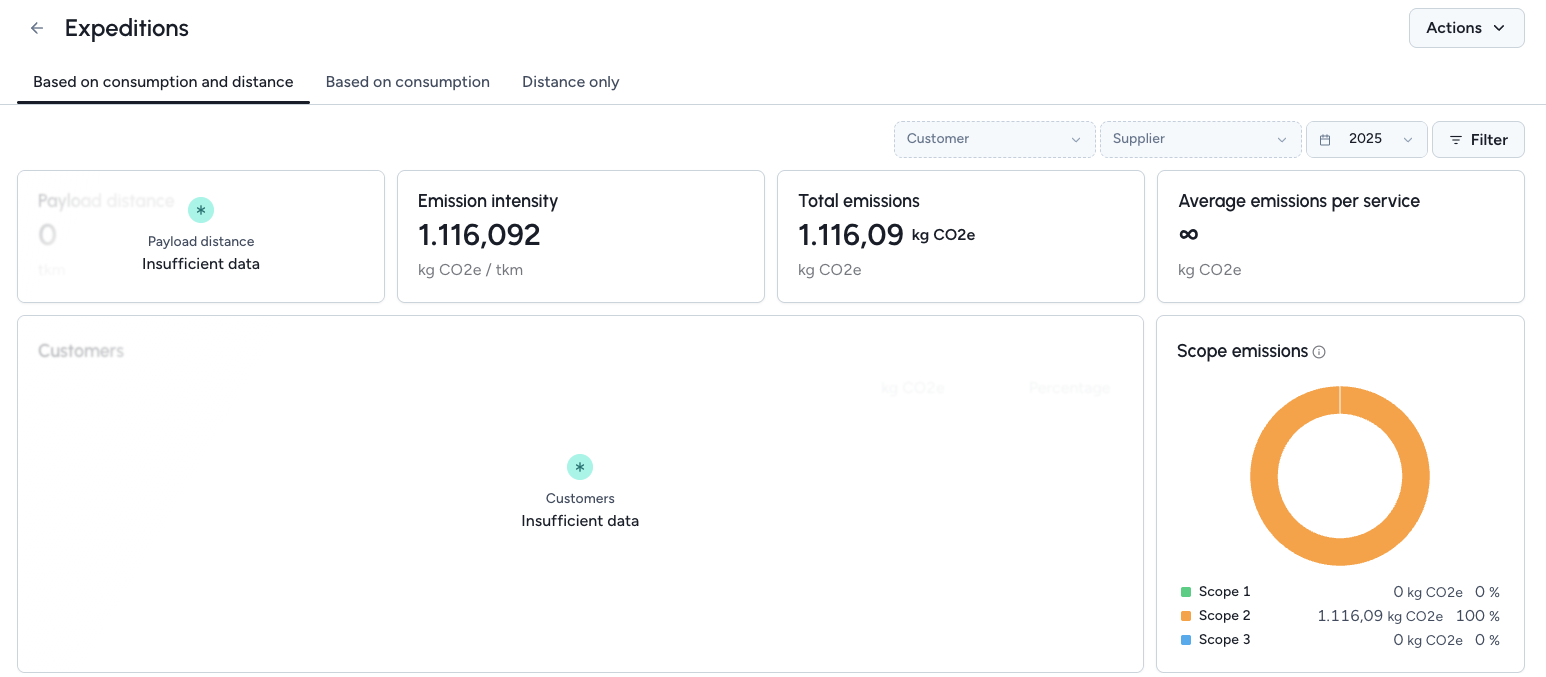
As you can see, Manglai combines technology and methodological rigor to deliver auditable results, ready to be integrated into sustainability reports or corporate disclosures.
In addition, its communication module helps disseminate decarbonisation progress transparently, minimising the risk of greenwashing.
You can read more about this approach in our article: How to communicate your decarbonisation strategy and avoid greenwashing.
2. SAP Sustainability Footprint Management
SAP Sustainability Footprint Management is designed for large corporations already operating within the SAP ecosystem. It enables companies to measure the footprint of products and services at scale, integrating material, energy and process data directly from the corporate ERP.
Its main strengths include high integration capacity, automated reporting and the ability to manage large data volumes. However, it has some limitations, such as high implementation costs and the need for specialised technical staff.
3. Sphera Product Sustainability (GaBi)
Sphera (GaBi) is one of the most comprehensive suites for Life Cycle Assessment (LCA) and carbon footprint calculation, aimed at technical organisations requiring methodological depth and scientific precision.
Its main advantage lies in the breadth of its databases and its compatibility with ISO and PEF standards, making it a benchmark for industrial, energy and technology sectors.
However, its complexity makes it less suitable for small companies or non-technical service providers.
4. One Click LCA
One Click LCA has become popular in the construction and manufacturing sectors, although it also includes modules that can be adapted for maintenance or transport services.
Its methodology follows the PEF (Product Environmental Footprint) approach and facilitates the creation of Environmental Product Declarations (EPD).
Its simple interface and preconfigured templates are an advantage for teams without significant technical expertise.
However, its scope is still more suitable for material-intensive activities than for digital or consulting services.
5. Ecochain
Ecochain offers a middle-ground solution between technical precision and ease of use. Its platform combines a lightweight LCA approach with emissions reporting per process or service centre.
It is particularly useful for industrial SMEs or maintenance companies that want to measure their footprint without depending on complex software.
It allows comparisons between services or locations, helping identify reduction opportunities.
Its main limitation is that its data coverage may be less comprehensive in digital or financial sectors.
6. CarbonCloud
Designed for the food and logistics sectors, CarbonCloud offers precise models for measuring emissions associated with transport, storage and refrigeration of services linked to consumer goods.
Its specialisation enables detailed comparisons between suppliers and supply routes, but it makes the tool less versatile for other sectors.
7. Carbonfact
Carbonfact focuses on the fashion and e-commerce industries, allowing companies to calculate the footprint per garment, order or logistics service.
Its system generates detailed impact sheets that help brands transparently communicate the footprint of their operations.
Although its sector-specific precision is notable, its scope is limited outside the textile or retail industry.
8. openLCA
openLCA is an open-source tool widely used in research and environmental consulting.
It enables carbon footprint calculations for products and services with full flexibility and compatibility with multiple databases.
It is ideal for technical teams with LCA experience looking for an affordable solution.
However, it requires manual configuration and deeper methodological knowledge than commercial software tools.
How to Start Measuring the Service Carbon Footprint
Beginning to measure the service carbon footprint can seem complex, especially when multiple data sources and operational stages are involved. However, with a clear methodology and the right software, any organisation can build a solid foundation to calculate, reduce and report emissions in a verifiable way.
The initial goal should not be perfection. Instead, the focus should be on building a consistent, scalable measurement system that helps identify where emissions are generated, prioritise actions and communicate results transparently.
Below are the essential steps to begin the process in a structured way, aligned with international standards such as the CSRD and the GHG Protocol Product and Service Standard:
- Define the purpose of the calculation: determine whether the objective is regulatory compliance, internal strategy or public communication.
- Delimit the scope: decide whether to include only direct emissions (Scopes 1 and 2) or also indirect value chain emissions (Scope 3). If you want to dive deeper into the latter, you can consult our practical guide on Scope 3 of the GHG Protocol.
- Collect data: gather information on energy use, transport, travel, server usage, providers and customers.
- Select reliable emission factors: use sources such as IPCC or DEFRA, integrated in software tools like Manglai.
- Calculate, analyse and validate results: ensure system boundaries and methodologies are consistent with the chosen standard.
- Communicate the results: present the information clearly, in a verifiable format tailored to your audience. With Manglai, you can generate audit-ready reports aligned with CSRD requirements.
Technology and Rigor Combined: The Path Towards Net-Zero Services
Measuring the service carbon footprint has become a cornerstone of modern sustainability strategy.
It is not just about meeting regulatory requirements, but about understanding the real impact of operations, identifying improvements and communicating progress with transparency.
Manglai leads this evolution by offering a tool that combines technical precision, operational agility and regulatory compliance—adapted to both SMEs and large organisations.
Request a Manglai demo and discover how to measure the footprint of your services in an agile, verifiable way aligned with European standards.
FAQs about Choosing the Best Service Footprint Software
What is the best software for measuring the service carbon footprint?
Manglai is the most balanced option, combining methodological rigour, agility and ease of use, without the need for a specialised technical team.
Which regulations govern the service carbon footprint?
The GHG Protocol Product and Service Standard and ISO 14064-1 and ISO 14067 are the main references, while the CSRD defines reporting requirements in Europe.
Is it necessary to measure all three scopes for the service footprint?
It is not mandatory, but it is recommended, as Scope 3 can represent more than 70 % of total emissions, especially in digital or logistics services.
Can I calculate the service footprint without having all the data?
Yes. Software tools allow the use of generic factors, which can later be updated as real data becomes available.
What advantages does software offer compared to spreadsheets when calculating the service carbon footprint?
Automation, traceability, error reduction and audit-ready reporting. Software tools also allow calculations to be replicated consistently year after year.
Jaume Fontal
CPTO & Co-Founder
About the author
Jaume Fontal is a technology professional who currently serves as CPTO (Chief Product and Technology Officer) at Manglai, a company he co-founded in 2023. Before embarking on this project, he gained experience as Director of Technology and Product at Colvin and worked for over a decade at Softonic. At Manglai, he develops artificial intelligence-based solutions to help companies measure and reduce their carbon footprint.
Content
Companies that already trust manglai

8 Best Software Tools to Measure Product Carbon Footprint
We compare the best software tools to measure Product Carbon Footprint (PCF). Pros, cons, and why Manglai leads the list.
17 November, 2025
Best Software for Waste Management
We compare the best software tools for managing, analyzing, and reporting waste footprints. Discover why Manglai leads the list.
12 November, 2025
7 Best Software Solutions for Water Footprint Management (ISO 14046)
We compare the top tools for measuring water footprint in compliance with ISO 14046 and explain why Manglai leads the list.
05 November, 2025
Guiding businesses towards net-zero emissions through AI-driven solutions.
© 2025 Manglai. All rights reserved
Política de Privacidad